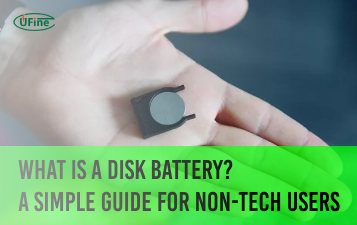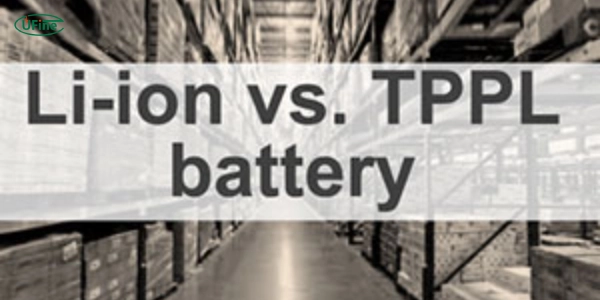Do you know what makes TPPL batteries different from lithium-ion batteries? In this article, we’ll explore the topic of TPPL batteries versus lithium-ion batteries. What advantages does TPPL offer over lithium-ion technology? And how do these batteries compare in terms of their applications? Let’s dive in to understand the distinctions between these two types of batteries and their respective uses.
Part 1. TPPL Battery
A TPPL (Thin Plate Pure Lead) battery is a valve-regulated lead-acid (VRLA) battery with a unique design featuring thin lead plates to achieve high power density and rapid recharge capabilities. This technology is particularly notable for its ability to deliver robust performance in various applications demanding high energy output.
TPPL Battery Structure and Composition:
- Thin Lead Plates: Constructed from high-quality lead and coated with a lead oxide paste, these plates are thinner than traditional lead-acid batteries, enabling quicker charging and discharging.
- Absorbent Glass Mat (AGM) Separators: AGM separators, positioned between the lead plates, enhance the battery’s stability and prevent acid spills, ensuring safe and efficient operation.
- Electrolyte: The electrolyte comprises a sulfuric acid solution, facilitating the chemical reactions necessary for energy storage and release.
- Plastic Housing and Terminals: Encasing the internal components, the durable plastic housing and terminals provide insulation and protection against external elements.
TPPL Battery Advantages:
- Fast Recharge Times: TPPL batteries boast rapid recharge times, typically 1 to 2 hours, making them ideal for applications requiring rapid replenishment of energy reserves.
- High Power Density: With their innovative design and thin lead plates, TPPL batteries offer a high power-to-size ratio, enabling efficient energy storage in compact spaces without sacrificing performance.
- Maintenance-Free Operation: Thanks to their sealed construction, TPPL batteries require minimal maintenance, eliminating the need for regular watering or electrolyte checks.
- Long Service Life: TPPL batteries demonstrate excellent cycle life performance, delivering reliable operation over an extended lifespan, thereby reducing replacement frequency and associated costs.
TPPL Battery Disadvantages:
- Sensitivity to Overcharging: TPPL batteries are susceptible to damage from overcharging, which can lead to premature degradation and reduced longevity if not correctly managed.
- Higher Initial Cost: While TPPL batteries offer numerous benefits, they often come with a higher initial purchase price than traditional lead-acid batteries, requiring a more significant upfront investment.
- Limited Deep Discharge Capability: Despite their high power density, TPPL batteries may have limitations in deep discharge applications, necessitating careful consideration of usage scenarios.
- Environmental Concerns: As with all lead-acid batteries, TPPL batteries contain lead, posing potential environmental risks if not disposed of or recycled correctly. Efforts to address these concerns focus on implementing responsible recycling practices and developing alternative battery technologies.
TPPL Battery Applications:
- Automotive Starting Batteries: People commonly use TPPL batteries as starting batteries in gasoline and diesel vehicles, providing reliable power for ignition and electrical systems.
- Emergency Backup Power Systems: In telecommunications, data centers, and industrial settings, TPPL batteries are critical backup power sources, ensuring uninterrupted operation during power outages or emergencies.
- Renewable Energy Storage: TPPL batteries play a vital role in storing energy generated from renewable sources such as solar or wind power, enabling efficient utilization of clean energy in off-grid and grid-tied systems.
- Marine and Recreational Vehicles: TPPL batteries are utilized as auxiliary power supplies in marine vessels, RVs, and other recreational vehicles, delivering dependable performance for onboard electronics and accessories.
Part 2. Lithium-ion battery
A lithium-ion (Li-ion) battery is a rechargeable energy storage device commonly used in portable electronics, electric vehicles, and renewable energy systems. This type of battery utilizes lithium ions as the primary charge carriers to facilitate energy transfer during charging and discharging cycles.
Li-ion Battery Structure and Composition:
- Lithium Cobalt Oxide (LCO) or Lithium Iron Phosphate (LFP) Cathode: The cathode, typically made of LCO or LFP, is the positive electrode where lithium ions accumulate during charging.
- Graphite Anode: The anode, composed of graphite, acts as the negative electrode and facilitates the intercalation of lithium ions during charging.
- Electrolyte: A liquid or gel electrolyte containing lithium salts allows for the movement of lithium ions between the cathode and anode during charge and discharge cycles.
- Separator: A porous membrane separator prevents direct contact between the cathode and anode, facilitating ion transport while preventing short circuits.
- Metal or Polymer Housing: The battery housing provides structural support and insulation by encasing the internal components, ensuring safe operation.
Li-ion Battery Advantages:
- High Energy Density: Li-ion batteries offer a high energy density, providing more energy storage per unit weight or volume than other rechargeable battery chemistries.
- Fast Charging: Li-ion batteries support rapid charging, allowing for shorter charging times than traditional lead-acid batteries and enhancing user convenience and productivity.
- Long Cycle Life: With proper care and maintenance, Li-ion batteries can endure numerous charge and discharge cycles, providing reliable performance over an extended lifespan.
- Lightweight and Compact: Li-ion batteries are lightweight and compact, making them ideal for portable electronic devices and applications with limited space.
Li-ion Battery Disadvantages:
- Limited Lifespan: Over time, the capacity of Li-ion batteries gradually decreases due to chemical degradation and electrode wear, ultimately necessitating replacement.
- Safety Concerns: Li-ion batteries are prone to thermal runaway and fire hazards if subjected to overcharging, short circuits, or physical damage, requiring appropriate safety measures during use and storage.
- High Cost: Li-ion batteries often come with a higher initial cost than traditional lead-acid batteries, which may impact their affordability, especially for large-scale applications.
- Environmental Impact: The extraction and processing of lithium for battery production and the disposal of spent Li-ion batteries can have ecological consequences if not managed responsibly.
Li-ion Battery Applications:
- Consumer Electronics: Li-ion batteries power various consumer electronics, including smartphones, laptops, tablets, and digital cameras, providing portable and rechargeable energy solutions.
- Electric Vehicles (EVs): Li-ion batteries serve as electric vehicles’ primary energy storage system, enabling emission-free transportation and contributing to the transition toward sustainable mobility.
- Renewable Energy Storage: Li-ion batteries store excess energy generated from renewable sources such as solar and wind power, providing a reliable means of balancing supply and demand in grid-tied and off-grid systems.
- Medical Devices: Li-ion batteries are utilized in various medical devices, such as portable defibrillators, infusion pumps, and powered wheelchairs, ensuring reliable operation and mobility for patients and healthcare professionals.
Part 3. The differences between a lithium-ion battery vs the TPPL battery
1. Chemistry:
- Lithium-ion Battery: Lithium ions are the primary charge carriers, with cathodes typically comprising lithium cobalt oxide (LCO) or lithium iron phosphate (LFP).
- TPPL Battery: Relies on lead-acid chemistry, featuring thin lead plates coated with lead oxide paste and sulfuric acid electrolyte.
2. Recharge Time:
- Lithium-ion Battery: Offers relatively quick recharge times, usually within a few hours.
- TPPL Battery: Boasts exceptionally rapid recharge capabilities, often fully recharged within 1 to 2 hours.
3. Energy Density:
- Lithium-ion Battery: Provides a high energy density, offering more energy storage capacity per unit weight or volume than TPPL batteries.
- TPPL Battery: While efficient, it generally offers lower energy density than lithium-ion batteries.
4. Cycle Life:
- Lithium-ion Battery: Demonstrates a long cycle life, with estimates ranging from 500 to 1000 charge and discharge cycles before significant capacity degradation occurs.
- TPPL Battery: Offers a good cycle life, with estimates typically ranging from 200 to 500 cycles.
5. Environmental Impact:
- Lithium-ion Battery: Raises concerns regarding the extraction and processing of lithium and the disposal of spent batteries.
- TPPL Battery: Contains lead, posing potential environmental risks if not properly disposed of or recycled.
6. Safety:
- Lithium-ion Battery: Prone to thermal runaway and fire hazards if mishandled or subjected to overcharging.
- TPPL Battery: Generally considered safer than lithium-ion batteries due to its less volatile chemistry.
7. Temperature Sensitivity:
- Lithium-ion Battery: Temperature-sensitive, performance, and safety affected by extreme temperatures require thermal management systems.
- TPPL Battery: More tolerant to temperature variations than lithium-ion batteries, making them suitable for a broader range of operating conditions without significant performance degradation.
8. Self-Discharge Rate:
- Lithium-ion Battery: Generally has a low self-discharge rate, retaining charge for extended periods when unused.
- TPPL Battery: Exhibits a higher self-discharge rate than lithium-ion batteries, necessitating more frequent recharging if left unused for extended periods.
9. Applications:
- Lithium-ion Battery: Widely used in consumer electronics, electric vehicles, renewable energy storage, and medical devices.
- TPPL Battery: Commonly employed in automotive starting batteries, emergency backup power systems, renewable energy storage, and marine applications.
10. Cost:
- Lithium-ion Battery: Often comes with a higher initial cost than traditional lead-acid batteries, though costs have been decreasing with technological advancements.
- TPPL Battery: Generally more affordable upfront than lithium-ion batteries but may incur higher operational costs over time due to maintenance needs.
Part 4. FAQs
-
What is the life expectancy of a TPPL battery?
The life expectancy of a TPPL battery typically ranges from 3 to 5 years. This makes TPPL batteries a reliable choice for applications where durability and longevity are essential, such as automotive starting batteries and emergency backup power systems. -
Which battery is better than a lithium-ion battery?
Lithium-ion batteries are often superior to TPPL batteries due to their higher energy density, faster recharge, and longer cycle life. However, for applications requiring rapid recharge capabilities and cost-effectiveness, TPPL batteries can be a competitive alternative. -
Are TPPL batteries better than AGM?
TPPL batteries offer advantages over AGM batteries in rapid recharge capabilities and better performance in high-power applications. However, AGM batteries excel in deep cycle performance and are more suitable for long-term reliability and resilience applications. -
Which is better, AGM or lithium-ion?
While AGM batteries are durable and cost-effective, lithium-ion batteries offer higher energy density and faster recharge times, making them ideal for high-performance and efficient applications. Ultimately, the choice between AGM and lithium-ion depends on specific requirements such as energy storage capacity, recharge time, and budget constraints.
Related Tags:
More Articles

What Is a Disk Battery? A Simple Guide for Non-Tech Users
A disk battery is a small, round cell used in watches, remotes, and other electronic devices. It delivers steady power for compact, low-drain devices.
What Battery Powers a Space Heater?
Discover the type of battery that powers space heaters and learn how to choose the right one for efficient heating in your home or office.
What Is an LR14 Battery? Learn About This C-Size Cell
The LR14 battery, also known as a C battery, delivers steady power. Learn its specs, uses, lifespan, and how it compares to other battery types.
Watch Battery Dimensions Chart: Sizes, Voltages, and Equivalents Explained
Understanding watch battery dimensions helps you choose the right size, voltage, and equivalent model to keep your watch running safely and smoothly.
How Long Can You Rely on Battery-Powered Generators?
Discover battery generator runtime & lifespan factors. Learn how to maximize performance and choose the right power solution.




